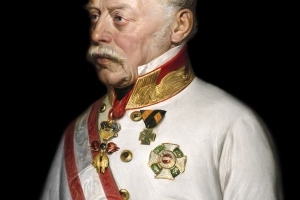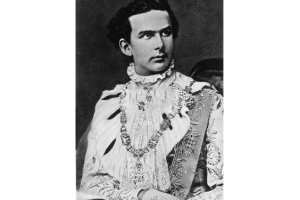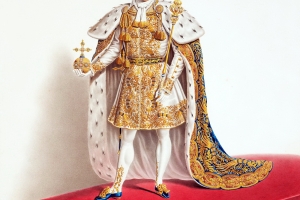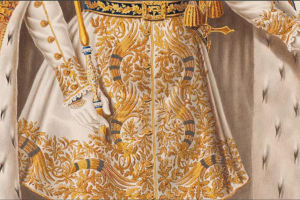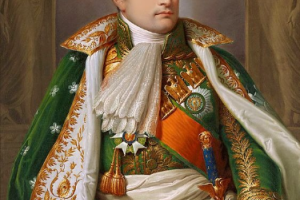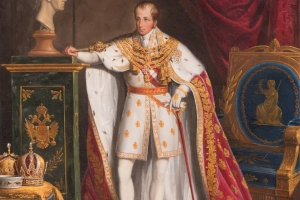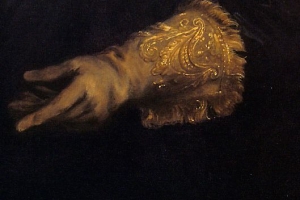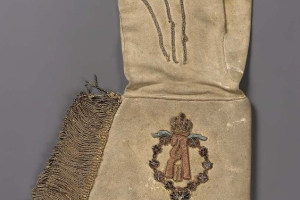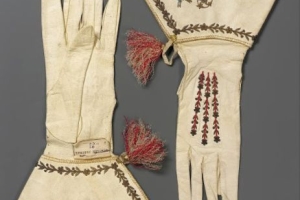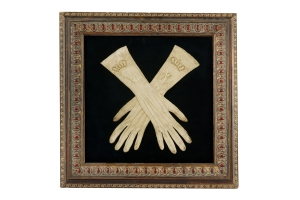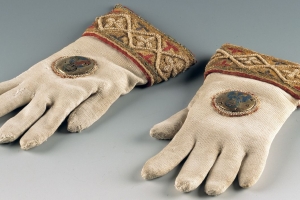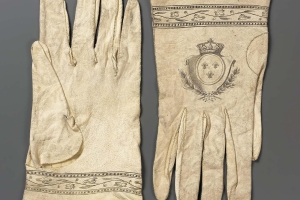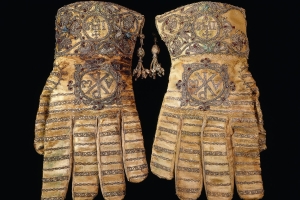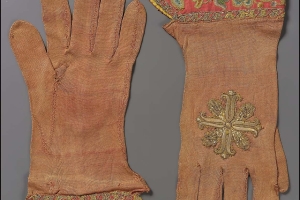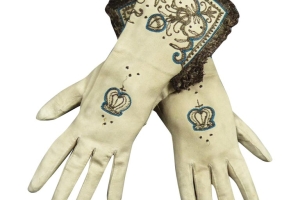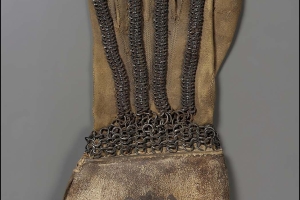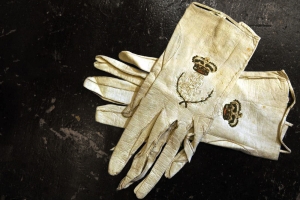Gloves belonging to Feldmarschall Josef Radetzky, Kingdom of Lombardo-Veneto, 1836-1857
Dress uniform gloves, with the coat of arms of the Lombardo-Veneto Kingdom, belonging to Johann Graf Radetzky von Radetz, a Bohemian nobleman who was one of the most important figures of the 19th century, as well as Feldmarschall, Governor of the Lombardo-Veneto Kingdom and universally known for the victories achieved in the battles of Custoza (24-25 July 1848) and Novara (23 March 1849) during the first Italian war of independence.
He was also Chief of the General Staff in the Habsburg monarchy during the period following the Napoleonic wars and proved decisive in the Allied victory as he was considered one of the main "architects" of the "Trachenburg" plan and supporter of the victorious Leipzig campaign. For him, Johann Strauss composed the famous "Radetzky March" to commemorate his victory in the Battle of Custoza.
These extraordinary gloves were worn by him starting from 17 September 1836 (the date on which he was promoted to Feldmarschall and already in place as Commander of the Austrian army in Italy) until 6 September 1857 when, always with the same rank and as Governor of the Kingdom of Lombardo-Veneto, was placed on leave due to age limits by Emperor Franz Joseph I.
It is with absolute certainty that the ownership and use of these exceptional gloves by Feldmarschall Radetzky can be established, thanks to a clasp to which a tag is attached, marked and created by the "Imperiale Regia Stamparia", headed "Palazzo Arconati - Mailand" (Radetzky's permanent residence located in via Brisa in Milan) on which the typology of the garment or "Handschuhe" and a sort of "Numerical Reference" (numerical classification which probably referred to an inventory managed by the personal waiter or by whoever, at Palazzo Arconati, used to manage the Feldmarschall's clothing), while on the back of the card, a wax seal to fix the cordura permanently with respect to the clasp, reports in addition to the complex personal emblem of Radetzky, consisting of the Imperial Habsburg eagle, also the wording "Feld Marschal. Graf. Radetzky Divissions Comando" certainly placed to seal their belonging to the Feldmarschall by the command to which they were inventoried together with the complete uniform.
In fact, in view of this, the waiters or valets of the court had among their tasks also that of managing the uniformity with respect to the expected ceremonial: it is in view of this that each dress or garment was marked with a "classification" which was much simpler to manage even in the event that these would have had to be given away for possible cleaning, moving, inventory or anything else. Furthermore, this practice, relating to the labeling of the personal clothing of Governors and Rulers belonging to the Habsburg dynasty, was also widely used by Eugen Ketterl, personal waiter/valet of Emperor Franz Joseph I and Empress Elisabeth of Austria (Princess Sissi), who employed the same labeling and classification system.
These exceptional gloves are produced in precious and refined goatskin and decorated with a wide band made of gold thread finely embroidered with the theme of oak fronds with acorns, a typical ornament of the military uniforms of sovereigns and dignitaries. Along the perimeter of the band, tinsel fringes and twisted light blue cotton threads, typical colors of the Austrian uniforms of the Lombardo-Veneto Kingdom, adorn them sumptuously. Both feature the coat of arms of the "Lombardo-Veneto Kingdom" on the back, magnificently embroidered using satin fabric, gold thread and fine light blue cotton threads to define the details that compose it.
Gloves, symbols of power and masters of ceremonies of royal rites, have always been emblems of authority and command: in fact, to confirm this, there is a watercolor depicting the Emperor/Kaiser Ferdinand I of Austria, signed A. Weißenböck and dated 1838, who wore gloves bearing the same emblem as these, which belonged to Feldmarschall Radetzky, during his coronation as Emperor of the Lombardo-Veneto Kingdom which took place in the Milan Cathedral on 6 September 1838.
Furthermore, many rulers, as per royal protocol, including Queen Victoria, Francis II of Habsburg Lorraine, Ferdinand I of Austria, Napoleon Bonaparte, King Edward VIII, Tsar Alexander II of Russia, Ludwig II king of Bavaria, Popes and many still others wore them frequently, even when they were portrayed in paintings.
It is very probable that they were designed by Philipp von Stubenrauch, court costume designer, who lived between 1784 and 1848 and created, with the same style and use of the same materials, the "Wappenrock für den Herold des Königreichs Lombardo- Venezien" or the insignia of the Herald of the Lombardo-Veneto Kingdom preserved at the Kunsthistorisches Museum (Museum of the Imperial Treasure of Vienna) inventoried under number WS XIV 65.
Exceptional historical testimony of one of the most important and influential figures of the 19th century.
References:
Kunsthistorisches Museum (Imperial Treasury Museum in Vienna): Inv. Nr. Schatzkammer, WS XIV 65.
https://www.khm.at/objektdb/detail/100705/
Kunsthistorisches Museum (Imperial Treasury Museum in Vienna): Inv. Nr. Schatzkammer, WS XIV 66.
Kunsthistorisches Museum (Imperial Treasury Museum in Vienna): Inv. Nr. Schatzkammer, WS XVI B 43.


